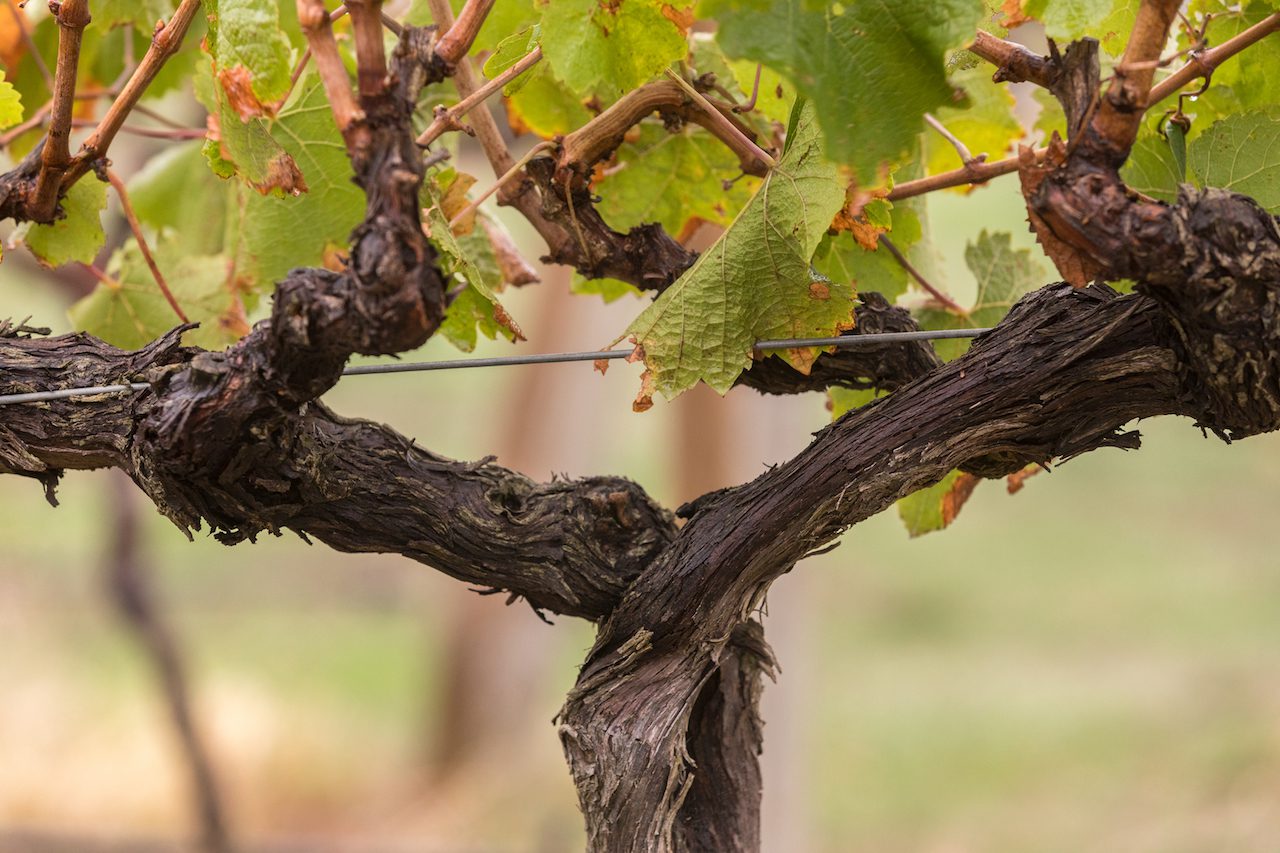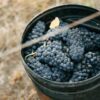
Words by Dan Traucki
Over the last few years WBM has published articles covering about 60 emerging grape varieties. Most of those have been the better known emerging varieties such as Fiano, Verdelho and Vermentino in the whites, and for the reds, Durif, Zinfandel, Saperavi and Cabernet Franc.
However, given that, according to Wine Grapes by Jancis Robinson, there are 1,168 winegrape varieties on the planet, and that does not include some of the native Chinese varieties that I have heard of or tasted. So, after you take out the 35 to 50 ‘mainstream’ (most popular) grape varieties, you can see that there is a long way to go in covering all the grape varieties used for making wine.
Yes, there are a number of these varieties that are so boring and mundane that they are not worthy of a mention, but there are also some rare or almost extinct varieties that are capable of making incredibly exciting wines.
Most of these emerging varieties seem destined to stay in the background, even in the longer term, while a few others will catch the wine drinker’s imagination and shoot into the limelight. Just like the way that Grüner Veltliner is doing so at present. In 2009, Canberra biodynamic winery Lark Hill produced Australia’s first Grüner Veltliner wine. Today, just a few years later, there are 34 Grüner producers in Australia with most of them being in the Adelaide Hills. In fact, the Hills has become the ‘Grüner Capital of the Southern Hemisphere’ and the interest from consumers seems to be growing faster than the plantings.
Amidst this sea of grape varieties, I have found a few that I think are noteworthy because they make really good wine, despite being very rare and hard to find. You could call them ‘Almost Emerging’ varieties. Here are a few that are of interest and in no particular order:
Ringer Reef 2017 Alpine Valley Vespolina – Vespolina is a native red variety of the Piedmont area of Italy, where it is usually used to soften off its ‘big brothers’ like Nebbiolo. It is almost never seen on its own as a varietal wine. The colour of this wine is like that of a slightly too dark a rosé. It has fragrant aromas of field mushrooms, spices and earthiness. The revelation was on the palate which was light, bright and zesty with masses of delicious flavours and depth that was belied by its light colour. I am totally sold on this fabulous wine. Different to, but somewhat like, a good Beaujolais, it is scrumptious and rearing to go.
Coriole 2017 McLaren Vale Picpoul – Picpoul is a native French white variety grown in the Rhone Valley and in Languedoc, as well as in Catalonia in Spain. It used to be very popular in the 17th and 18th centuries but has faded away to be rather scarce in Europe today. This century the variety has found a new home in the Chiricahua Mountains in Southern Arizona and more recently in Australia. Today, there are three growers, including an oyster farmer from NSW who is selling this wine as the perfect accompaniment to his oysters. The only commercially available Picpoul I have encountered so far is the divine Coriole Picpoul. Having tasted both the 2016 and 2017 wines, I can say that this variety is truly ideal to be enjoyed with freshly shucked oysters and will definitely grow in popularity.
JB Wines 2016 Barossa Clairette – Clairette is a white French variety that was used mainly for making Vermouth. This variety has been slowly fading away over there as it tends to make high alcohol/low acid wines which can be described as flabby. It ripens after most of the red varieties have. However, given proper TLC it makes a delicious, refreshing, round, smooth wine. This elegant example from JB Wines has a hint of coco on the bouquet and a smidge of sweetness on the front palate leading to a smooth, round, tasty mouthful of delightful flavours. It is a delightful wine that keeps and matures well. This was amply demonstrated after having the opportunity of tasting both of the older vintages supplied by JB Wines – 2013 and 2012 Joseph’s Clairette. In fact, with a bit of age this variety could be described as a red wine drinker’s white wine.
We are very fortunate here in Australia to have winemakers who are willing to experiment with these rarer emerging varieties. A couple of the leading lights in this experimental charge to find ‘new’, alluring varieties are Paulmara Estate and Dell’uva Wines, which are both located in the Barossa.
Paulmara Estate has imported cuttings of a raft of Greek varieties including the lesser known white varieties of Robola and Limnio, and the well-known red varieties of Xinomavro, Agiorgitiko and Mavrodaphne. Given the quality of the Paulmara wines I have seen, these Greeks will be well worth waiting for. Just like the first Australian version of the white Assyrtiko which was produced in 2016 by Jim Barry Wines in the Clare Valley.
Dell’uva Wines is like a veritable Aladdin’s Cave of Mediterranean grape varieties, having produced wine from 32 different varieties so far, with another 10 to 15 in the pipeline. I feel like a kid in a candy store every time I catch up with the affable Wayne Farquhar, because each and every Dell’uva wine I have tasted has been a great Aussie expression of that particular variety.
Among the lesser known white varieties that they have turned into delicious wines are:
Dell’uva 2017 Barossa Arinto – This Portuguese variety is the biggest selling white wine for Dell’uva, and one can see why with its enticing bouquet of roses and violets, a lively palate of fresh citrus, limes and lemon. It is a very appealing, easy to drink wine.
Dell’uva 2016 Barossa Verdejo – Verdejo is the main white grape variety of the Rueda region of Spain where it makes several different styles of excellent wine, from steely dry through to alluring dessert wines. This is a very tasty dry example that goes really well with seafood.
Dell’uva 2015 Barossa Verdicchio – Verdicchio comes from the Marche region of Italy where it is widely planted. It has alluring, rose petal aromas and smooth citrus flavours that are well balanced with the tangy acidity on the finish. Ideal with seafood, chicken and salad dishes.
Another of the more adventurous winery set, which is also one of the Aussie Grüner Veltliner superstars, is Hahndorf Hill Wines. It focuses its efforts on native Austrian red varieties such as Blaufrankisch and Zweigelt.
Hahndorf Hill 2015 Adelaide Hills Blue Blood Blaufrankisch – This is a beautiful wine with its blueberry aromas along with cherries, plums and a smidge of spice. It is a sensational example of this classy variety that I consider to be to very much like a Pinot Noir that has been working out at the gym.
Hahndorf Hill 2017 Adelaide Hills Zsa Zsa Zweigelt Noveau – While not as serious a wine as the variety makes in Austria, it is a light, bright, delightful wine that is perfect for summer drinking when nicely chilled.
Last but not least, I had the opportunity to try an Aussie expression of a very rare red variety called Dornfelder. Dornfelder is a German red grape variety originally created through complex cross-breeding in the fifties, by August Herold. It was officially released for growing in the late 1970s.
Whiterock Vineyards 2015 Tasmania Dornfelder – This very interesting wine hails from Tasmania. It has a deep-purple colour with a delightful aroma of blueberries and mouthfilling, smooth, tasty, flavours with a tight, acid finish.
This article has only been a small snapshot of the exciting pioneering work on emerging varieties from some of our more adventurous winemakers. You never know what variety is going to capture the wine drinker’s taste buds and imagination. For example, who in the 1970s Australian wine industry would have put money on Chardonnay going from zero to hero in less than a decade? Likewise, who in the 1980s to early 1990s would have tipped that Sauvignon Blanc would usurp ‘King’ Chardonnay?
I am not saying that any of the wines mentioned (except possibly Grüner Veltliner) are going to become vinous superstars, but there is a possibility of them becoming more prevalent and visible than what they are today thanks to the few daring souls growing them.
DAN TRAUCKI is a wine journalist and a wine industry consultant specialising in assisting with exports to Asian markets. You can contact Dan at dan@wineassist.com.au














Recent Comments